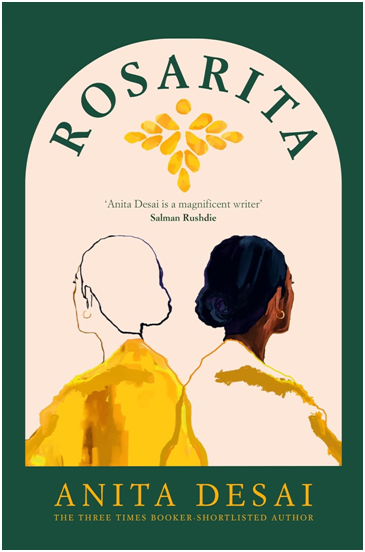 My first introduction to Anita Desai’s work was as a ten-year-old borrowing books from my school library over the summer holidays. ‘The Village by the Sea’ was an intriguing title and I, having lived near the Arabian Sea for all of my childhood, immediately gravitated towards the book.
My first introduction to Anita Desai’s work was as a ten-year-old borrowing books from my school library over the summer holidays. ‘The Village by the Sea’ was an intriguing title and I, having lived near the Arabian Sea for all of my childhood, immediately gravitated towards the book.
This was a time when English fiction by South Asian authors wasn’t easily accessible, and even more so when it came to YA and children’s fiction. Until that point, I had been consuming a steady diet of Beatrix Potter, Enid Blyton and Roald Dahl.
Through the years since, I have followed Anita Desai’s work closely, so when the thrice Booker Prize short listee published her new novella Rosarita in July this year, I set aside my already Herculean TBR list and bought it on publication day.
Though slim, Rosarita is no light read – and that is meant in the best possible sense of those words. True to her renowned literary skill, Desai manages to neatly pack in themes surrounding the Partition of India, the Mexican revolution, the resulting generational family traumas as well as a hero’s journey to self-discovery within the confines of seventy pages.
Bonita is our protagonist. She visits Mexico for a language course where, in a chance encounter, she meets a mysterious woman claiming to be from her mother Sarita’s past. This woman (referred to by Desai as The Stranger in the first half of the book, and The Trickster in the second) keeps us guessing as to whether she is a real person from Sarita’s time in Mexico, or a figment of Bonita’s imagination. As The Stranger shapeshifts throughout the novel, thus earning her second title of The Trickster, one does wonder if she is Bonita’s subconscious, slowly unravelling buried memories of her mother leaving her family behind for a mysterious quest abroad.
The author draws intriguing parallels between the Mexican Revolution of 1910 and the Indian Independence Movement with its subsequent Partition in 1947. The use of trains is particularly potent. Sarita descends from ‘railway people’ with no explanation ever given to her daughters beyond this term. Trains played a vital role in transporting those fleeing either side of India’s borders during Partition and it was India’s railway stations that witnessed reunions, tragic separations, mass violence and murder. Desai is cleverly hinting that Sarita’s family were refugees and this theory is strengthened both by Sarita’s reluctance to talk about it as well as her in-laws avoiding the subject disdainfully.
Desai mentions the role of trains used during the Mexican Revolution, as well as the paintings by Satish Gujral, who whilst on a scholarship to study mural art in Mexico, noticed the similarities between the murals painted for the Revolution and the art made in the aftermath of Partition.
Another way in which Desai links Mexico to India is through the sensory details of the landscape. Mexico has a tropical climate and the use of imagery such as mosquito nets conjures up powerful images of stately postcolonial homes in India, with large four poster beds veiled in gossamer.
Parrots and peacocks, traditionally known as Indian birds make guest appearances in the novel, carefully strewn through the prose as another layer of affinity between the two cultures.
But, perhaps, the more subtle message Desai is trying to deliver through the threads of the Independence movements and the evocative landscape, is that of the complex nature of mother-daughter relationships.
Rosarita can be interpreted as a daughter’s quest to understand an emotionally absent mother. The Sarita of Bonita’s childhood is reserved, taciturn and dutiful at best. The Rosarita of The Stranger’s tales is vivacious, talented and a flamenco dancer! Desai’s brilliance in threading together Mexico and India shines through in the smallest of details, right down to the naming of her characters.
Skilfully, we are taken through the journey of both mother and daughter, showing us the different layers of personality we must shed along the way in our lives. Bonita is on the path to growth and perhaps this fateful meeting with the ghosts of her mother’s past is what she needs in order to move forward with her own life. She learns, or perhaps imagines, the path through which her mother journeyed before returning to her life in India and through examining her mother’s past, she finds herself at a crossroads. ‘Just as you had shed her, she implied. She now shed you. Go free’
Bonita is now free to carve her own path and Desai leaves her safe in our imagination, a handshake based on trust extended towards her reader.

